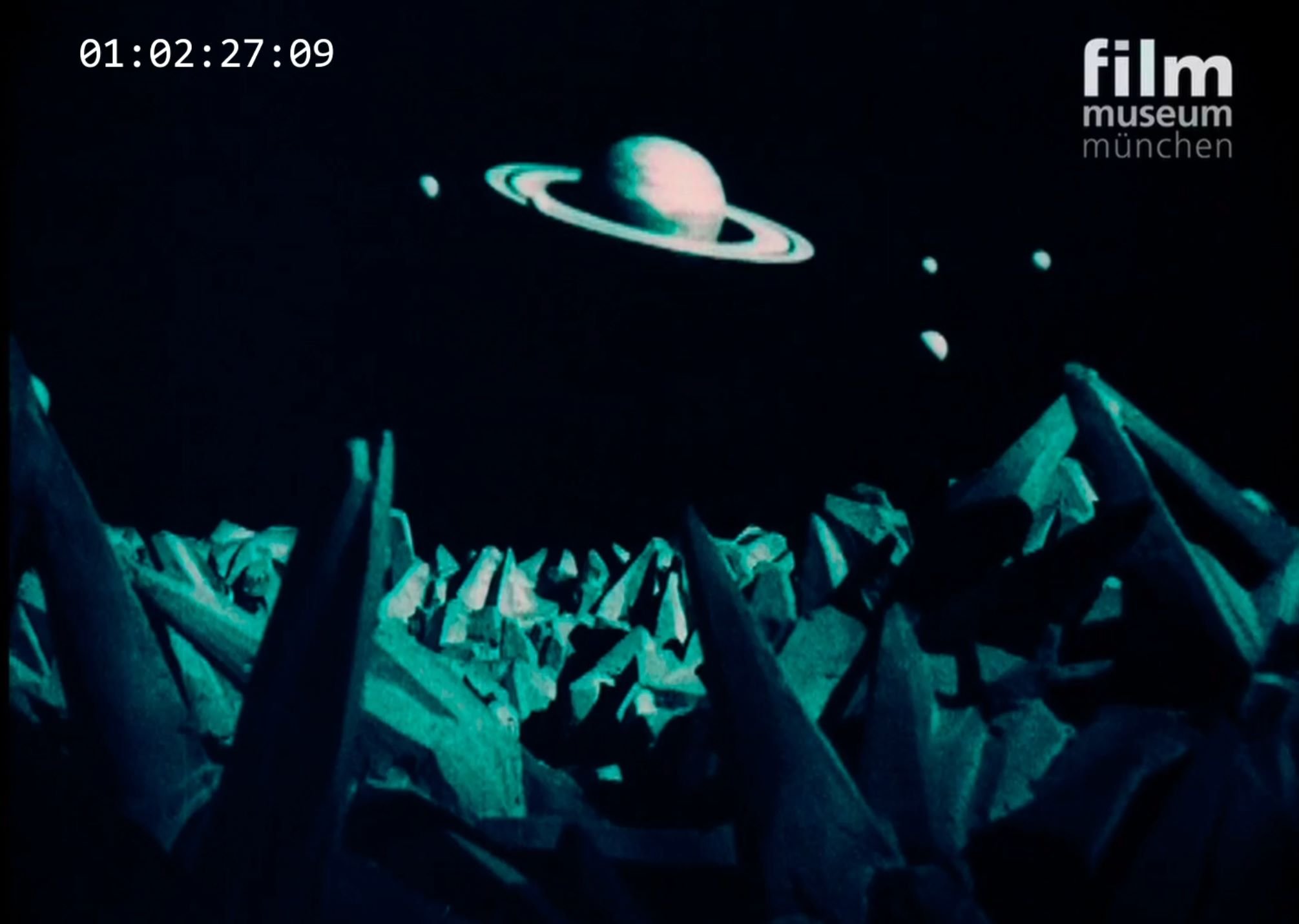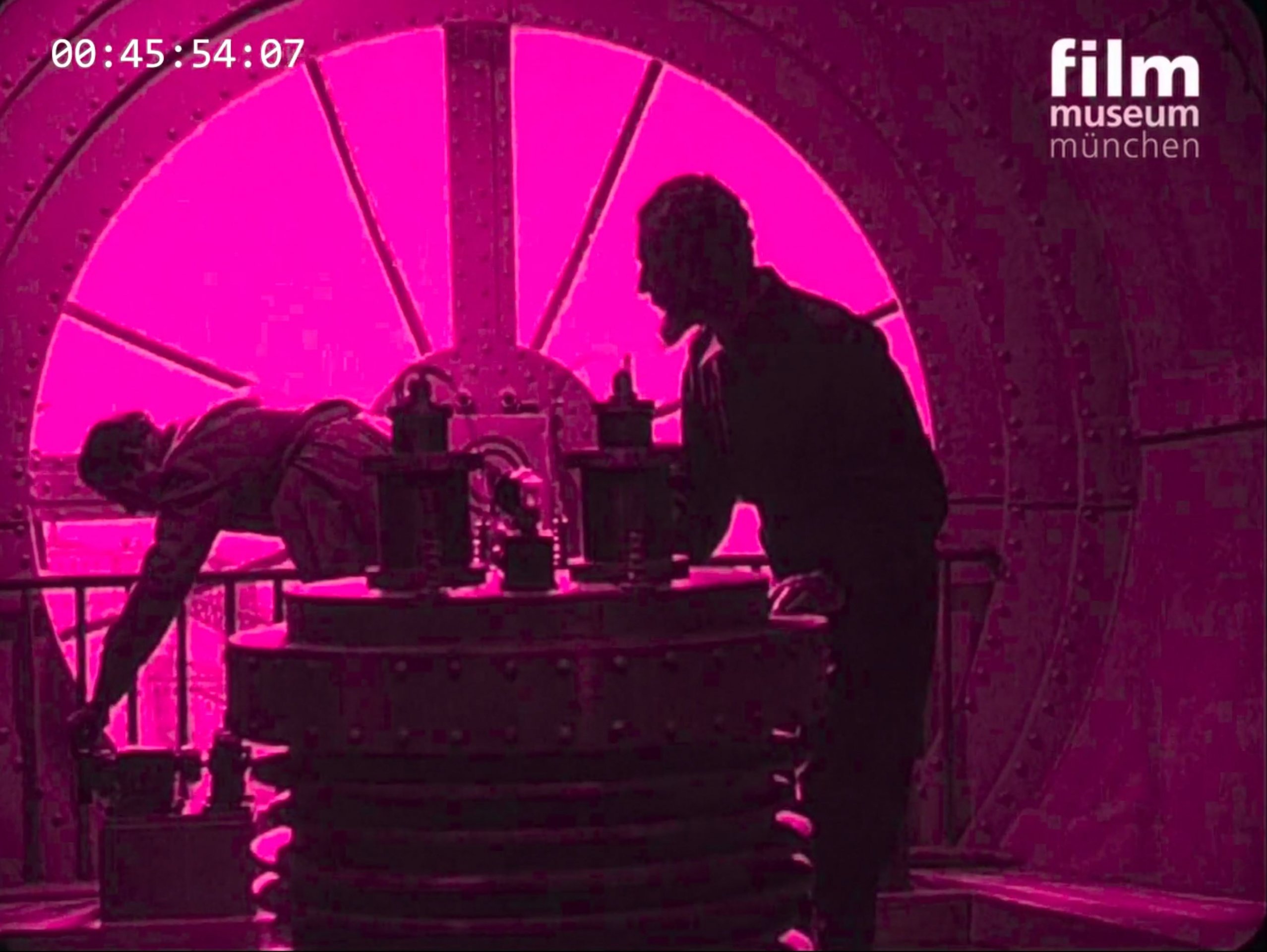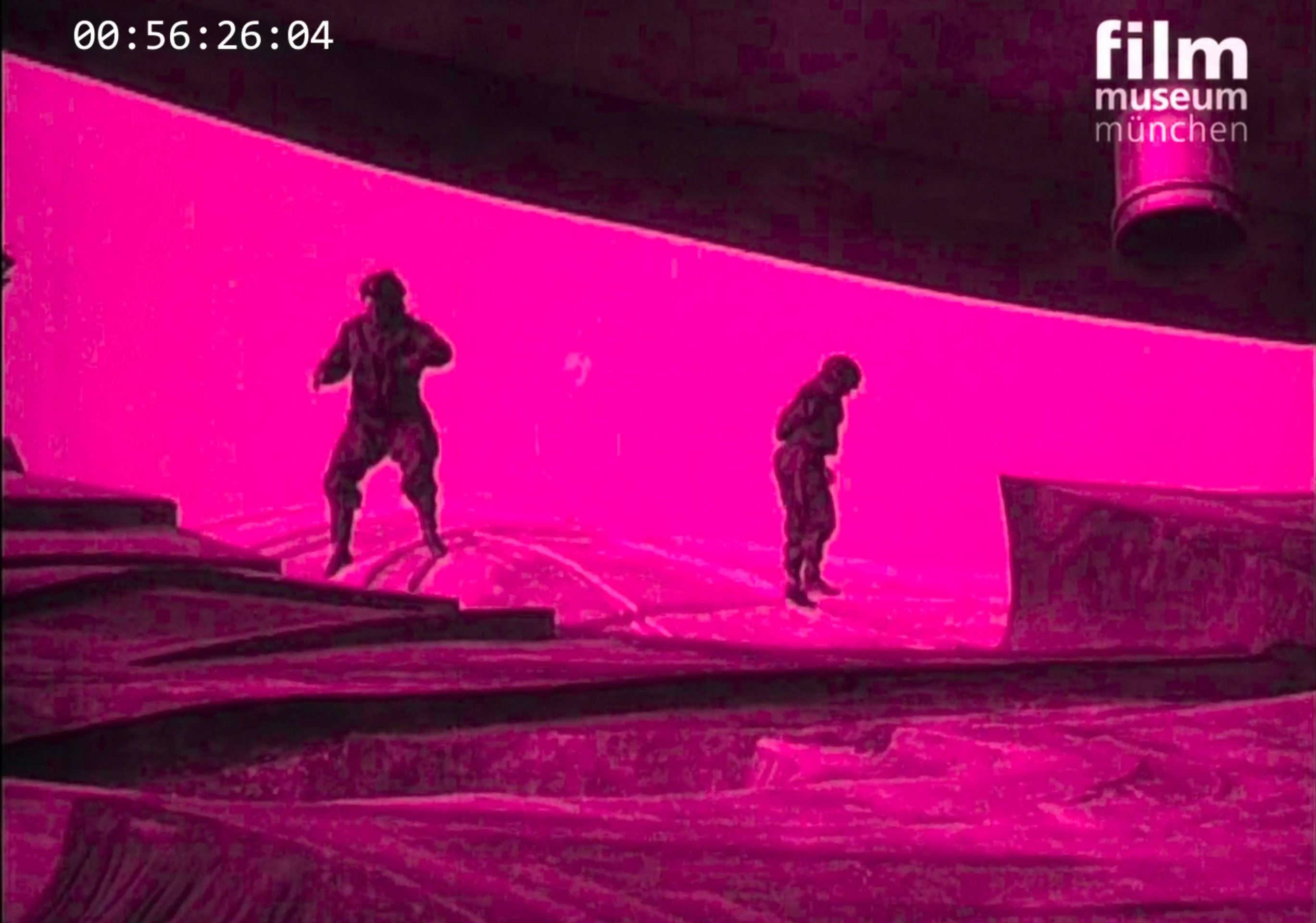Our Heavenly Bodies
(Wunder der Schöpfung )
Germany 1925, 92'
Director: Hanns Walter Kornblum, Johannes Meyer, Rudolf Biebrach
Screenplay: Hanns Walter Kornblum, Ernst Krieger
Cast: Margarete Schlegel, Theodor Loos, Paul Bildt, Oskar Marion, Wilhelm Kaiser-Heyl, Margarete Schön
Producer: Universum-Film Aktiengesellschaft (UFA), Kulturabteilung
DCP (SD)
Source: Friedrich-Wilhelm-Murnau-Stiftung
Translation: ENG / PL
Our Heavenly Bodies is a space documentary aimed at providing a synthesis of the knowledge of the universe at the time. Due to the level of technological development, as well as the growing interest in futuristic stories, the film contains elements of science fiction – drawn from literature, visual arts, and cinema (it is worth comparing the film with A Trip to Mars, which will be part of Sunday's program). This fascinating example proves that cinema was considered a scientific medium, without imposing any limits on creativity or ignoring aesthetics at any step of the way.
The film is divided into episodes that present various topics concerning the universe: the Solar System, the development of astronomy and the laws of physics, descriptions of planets and nebulae, as well as the future of Earth in the context of the Sun’s death. The filmmakers also strive to demonstrate quite abstract phenomena – for example, discussing the specifics of astronomical observations, presenting scenes from the Earth's past just like we see the light of dead stars, or explaining the influence of gravity on people by referring to Gulliver in the Land of Lilliput. First and foremost, however, Our Heavenly Bodies employs the tour de monde technique, with a group of astronauts travelling through our galaxy, making stops at various locations and presenting celestial bodies.
This production is an example of a German Kulturfilm, i.e., usually a short educational film produced in the 1920s, focusing on various fields, including natural sciences, geography, history, as well as films aimed at raising awareness. This was the background from which Hanns Walter Kornblum had emerged, who first led the educational film department at the Deulig studio, and then founded his own company Colonna-Film, only to show the true extent of his epic ambitions of popularizing science in his Einstein Theory of Relativity (1922). The film’s success attracted the attention of the UFA, resulting in the filming of Our Heavenly Bodies.
The film presents various breakthrough theories in physics and astronomy (references to Copernicus, Kepler, or Galileo), many of which are very creatively visualized. Images of outer space at times resemble avant-garde animations or expressionist set designs (created in part by Walter Reimann, known for The Cabinet of Dr. Caligari [1920] and Algol [1920]). These are juxtaposed with quite impressionistic shots of the sky as seen from Earth. The film crew, led by Kornblum, showcases “the heavenly miracle of creation,” a profound sense of beauty and mystery that could equally captivate romantic poets, seekers of the divine, mountain film creators, and scientists alike. This lofty, pathos-filled aesthetic remains a constant element in contemporary space documentaries, as noted by Magdalena Kempna-Pieniążek (see Ekrany 2024, no. 3).
For this reason, Kornblum brought on board not only a group of scientific experts but also many set designers, animators, and special effects experts. The film was tinted, employing stop-motion techniques, forced perspective, drawn and clay animation, and double exposure... Our Heavenly Bodies today can be viewed as a catalog of past film techniques, but also a largely overlooked pioneer of imagery and narrative techniques so iconic in space documentaries and science fiction movies. The model of educational space travel can also be found in the works of Carl Sagan, whereas circular capsules and the depiction of weightlessness – in those of Stanley Kubrick or Alfonso Cuarón. Our Heavenly Bodies is an undiscovered gem, inspiring later narratives of outer space.
By Marta Stańczyk
The film’s restoration was carried out in 2008 by Filmmuseum München, using a contemporary tinted nitrate film measuring 1,714 meters with Swedish and Finnish intertitles, sourced from KAVI (the Finnish Film Archive in Helsinki), and a 497-meter nitrate dupe negative with German intertitles from Deutsche Kinemathek in Berlin. The missing German intertitles were recreated based on a German censorship card held in the Swedish Film Archive. The reconstructed version of the film is almost complete, with only a few shots missing.
The screening will be preceded by a lecture delivered by Maral Mohsenin and a series of short films, accompanied by music from the band Voices of the Cosmos.
live music: Voices of the Cosmos





